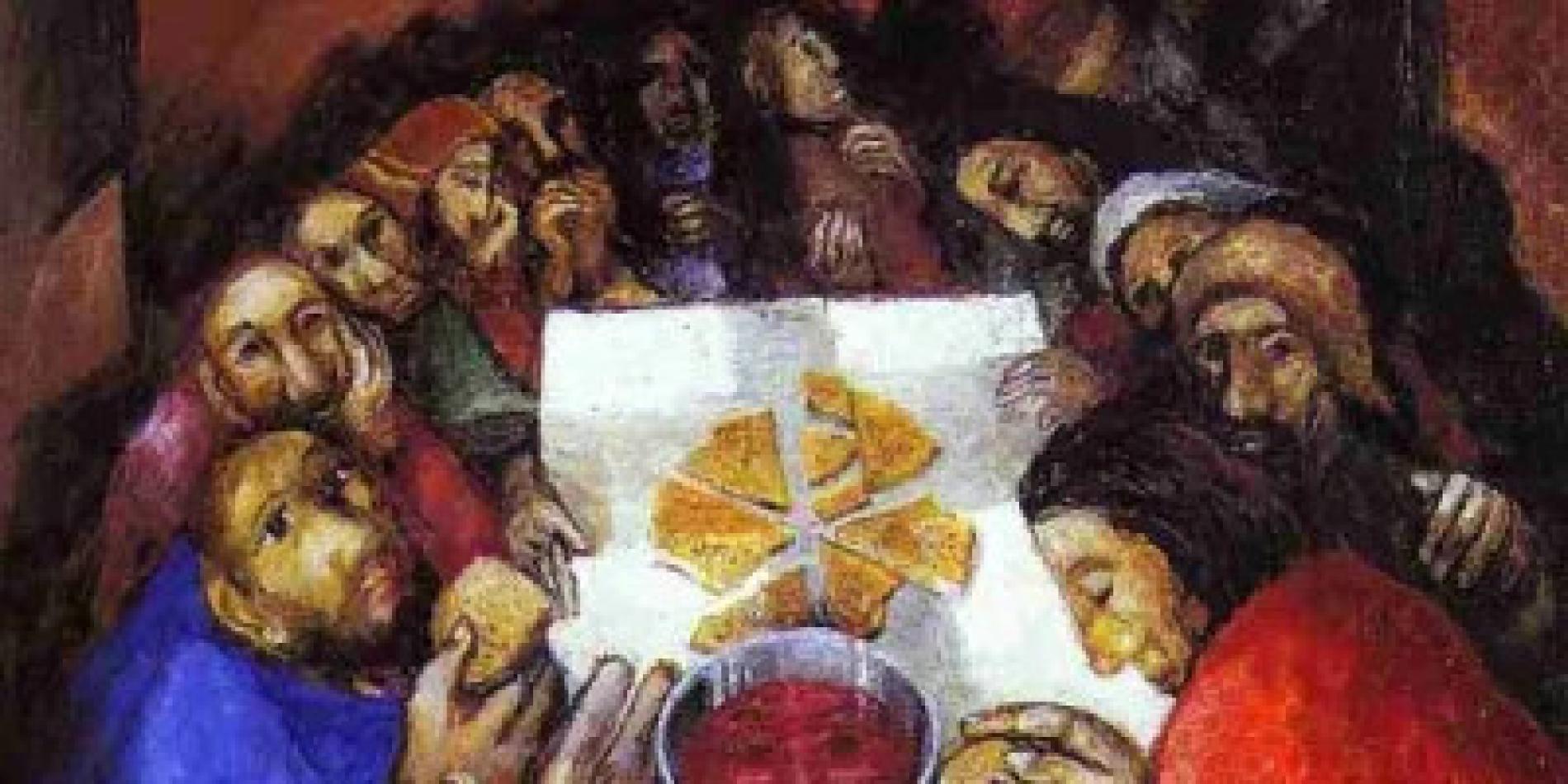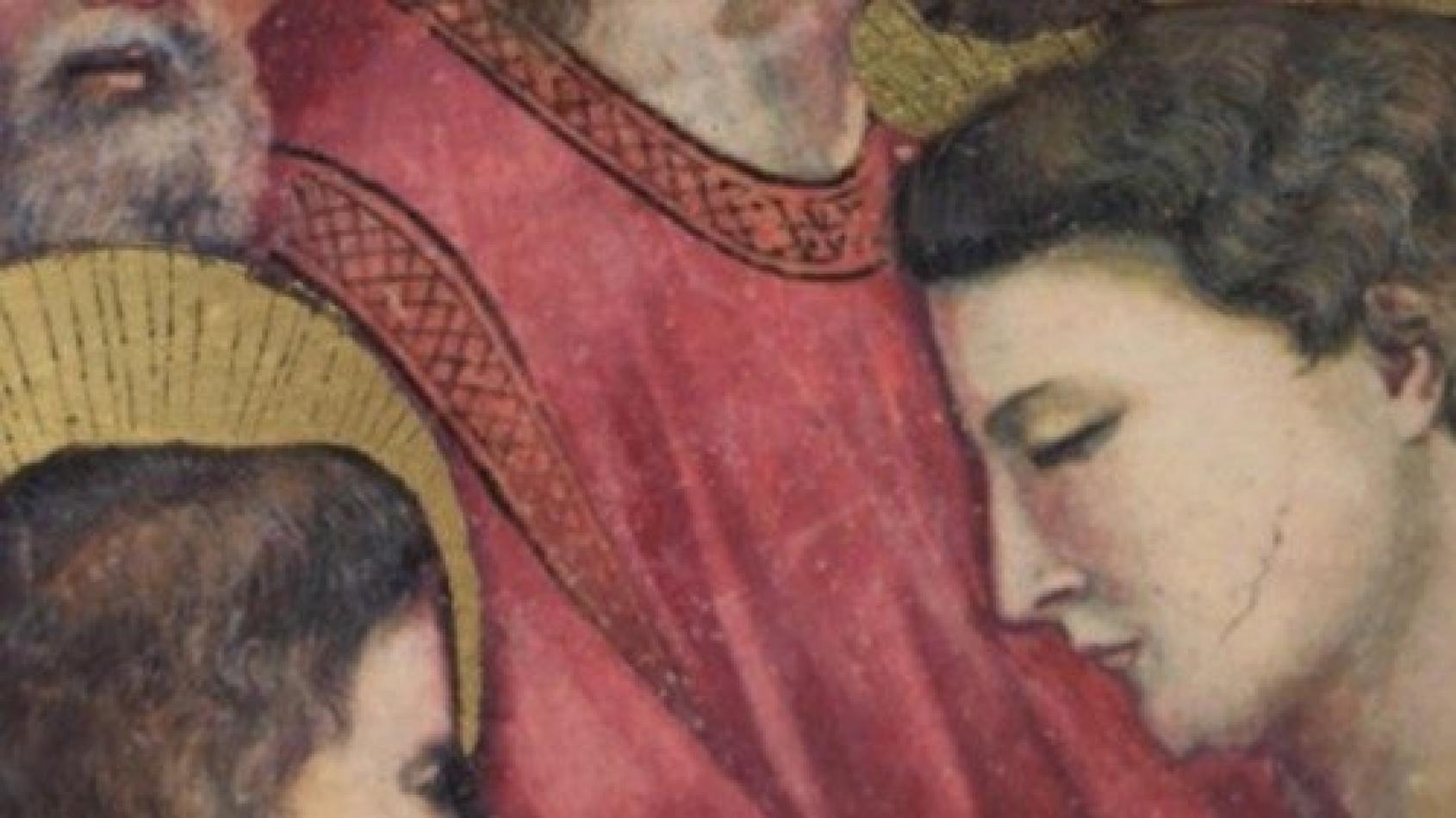Daniel Comboni
Comboni Missionaries
Institutional area
Other links
Newsletter
Today we listen to the final part of Jesus’ discourse on the bread, following the multiplication of the loaves. In the first part of the discourse, Jesus presented Himself as the Bread/Word that came down from heaven, provoking murmuring among the “Jews,” who believed that it was the Torah/Law that was the Word that had come down from heaven. In this second part, Jesus takes a further step, asserting that it is not only His Word that is bread, but His very person.
From the Bread of the Word to the Eucharistic Bread
“The bread that I will give is my flesh.”
John 6:51-58
Today we listen to the final part of Jesus’ discourse on the bread, following the multiplication of the loaves. In the first part of the discourse, Jesus presented Himself as the Bread/Word that came down from heaven, provoking murmuring among the “Jews,” who believed that it was the Torah/Law that was the Word that had come down from heaven. In this second part, Jesus takes a further step, asserting that it is not only His Word that is bread, but His very person: “The bread that I will give is my flesh.” Something unimaginable! “The Jews then began to argue sharply among themselves: ‘How can this man give us his flesh to eat?'” Jesus moves from the image of manna to the Passover lamb!
Jesus’ discourse becomes truly hard and scandalous for the “uncircumcised hearts” (Jeremiah 9:26). Far from softening the tone and mitigating the language, it seems that Jesus intensifies it. As a frame for this section of the discourse, we find at the beginning (v. 51) and at the end (v. 58) Jesus’ statement: “Whoever eats this bread will live forever.” Then, four times, both in positive and negative forms, He reiterates the necessity of eating His flesh and drinking His blood to have life: “Whoever eats my flesh and drinks my blood has eternal life” / “Unless you eat the flesh of the Son of Man and drink his blood, you have no life in you.”
At this point, Jesus speaks in a very physical and blunt manner, leaving no room for a symbolic or parabolic interpretation. We notice a persistent emphasis on concreteness in the words used: bread/food/drink: 7 times; eat/drink: 11 times; flesh/blood: 10 times; life/live/raise up: 10 times. The Bread of the Word now becomes the Bread of the Eucharist, that is, the body and blood of Jesus, His humanity.
While Jesus was speaking of the Bread/Word, a symbolic interpretation was possible, like the Wisdom mentioned in the first reading (Proverbs 9:1-6). But here, it is not just about new doctrine or wisdom: “The bread that I will give is my flesh for the life of the world.” And this confounds His listeners. By adding “drink the blood,” the scandal is total because this was something forbidden, a sin punishable by death (see Leviticus 17). Naturally, His listeners could not understand this discourse, but the Christian readers of St. John could understand it very well. It is to them that the evangelist is addressing. This text, in fact, is a catechesis on the Eucharist, perhaps introduced into the Fourth Gospel at a later stage. And there were reasons to insist on the concreteness of body, flesh, and blood because, towards the end of the first century, there were Gnostic currents that despised the body and matter, risking emptying and denying the incarnation. This is why St. John is keen to insist that the Word became flesh.
Points for Reflection
1. The Eucharist: Symbol or Reality? Today’s Gospel invites us to reflect on the Eucharist. The risk of a purely symbolic interpretation of the Eucharistic elements of bread/flesh and wine/blood is ever-present. Putting aside the fact that various Protestant churches view the Eucharist as a symbolic act, it is not guaranteed that all Catholics believe in the real presence of Christ in the Eucharistic species. According to a 2019 Pew Research Center survey, about 69% of American Catholics believe that the bread and wine are symbols, while only 31% believe in the real presence. Therefore, the majority is in stark contrast with the Church’s faith. It is to be hoped that the faith and awareness of partaking in the body and blood of Christ are common among those who regularly participate in the Holy Mass. However, according to St. Paul’s advice, “Everyone ought to examine themselves before they eat of the bread and drink from the cup” (1 Corinthians 11:28-29). Each of us should look at that Bread placed in our hands and renew our profession of faith and love: “My Lord and my God!” There is, indeed, the danger of receiving Communion automatically and with a certain indifference, without the fervor of love and gratitude.
2. Dialogue Between Life and the Eucharistic Table. “Our life must dialogue with this table” (Card. Tolentino). If my life does not feel challenged by the Eucharist, something is amiss. The Eucharist offers us a different vision of life and proposes a different way of facing existence. The Eucharist is a program of life. In particular, we should ask ourselves if our domestic table is in harmony with the Eucharistic one, as a place of communion, dialogue, welcome, and solidarity…
3. The Eucharistic Bread as a Journey. We often speak of the Eucharistic Bread as nourishment that sustains us on our pilgrim journey. It would also be appropriate to see it as the Journey itself that leads us to the eschatological Banquet of joyful and fraternal encounter of all humanity, the object of our hope. This means that our daily paths should not be dispersive, leading us away or causing us to lose our way, but should bring us to the Sunday Eucharist. A Christian life without the compass of the Eucharist easily becomes aimless wandering, eventually leading to a labyrinth!
P. Manuel João Pereira Correia, mccj
Verona, August 2024
Feed on Jesus
John 6: 51-58
by José Antonio Pagola
According to John’s story, once more the Jews are unable to go past the physical and material, and interrupt Jesus, scandalized by the aggressive language he’s using: «How can this man give us his flesh to eat?». Jesus doesn’t take back his affirmation, but gives his words a more profound meaning.
The nucleus of his explanation allows us to go into the experience that the first Christian communities were having when they celebrate the Eucharist. According to Jesus, the disciples don’t need to just believe in him, but they should feed on and nourish their life in his very person. The Eucharist is a central experience for Jesus’ followers.
The words that follow do nothing but highlight their fundamental and indispensible character: «My flesh is real food and my blood is real drink». If the disciples don’t feed on him, they could do and say much, but they mustn’t forget his words: «You won’t have life within you». In order to have life within us we need to feed on Jesus, nourish ourselves on his vital life-force, place deep within us his attitudes and his criteria for living. This is the secret and the power of the Eucharist. Only those know it who communion with him and feed on his passion for the Father and his love for God’s children.
Jesus’ language has great expressive power. He makes this promise to whoever knows how to feed on him: «That person lives in me and I live in that person». Whoever is nourished by the Eucharist experiences his relationship with Jesus not as something external. Jesus isn’t a model for life that we imitate from outside. He nourishes our life from within.
This experience of «live in» Jesus and allow Jesus to «live in» us can transform our life at its root. This mutual interchange, this intimate communion, difficult to express in words, constitutes the true relationship of the disciple with Jesus. This is what it means to follow him, sustained by his very life-force.
That life that Jesus transmits to his disciples in the Eucharist is one that he himself receives from the Father, an inexhaustible Fountain of life at its fullest. A life that isn’t extinguished by our biological death. That’s why Jesus dares to make this promise to his own: «Anyone who eats this bread will live forever».
Without doubt, the most serious sign of the crisis of Christian faith among us is the so common abandonment of the Sunday Eucharist. For those who love Jesus, it’s painful to observe how the Eucharist continues losing its power to attract. But it’s more painful yet to see that even within the Church we watch this happening without venturing to react. Why?
José Antonio Pagola




